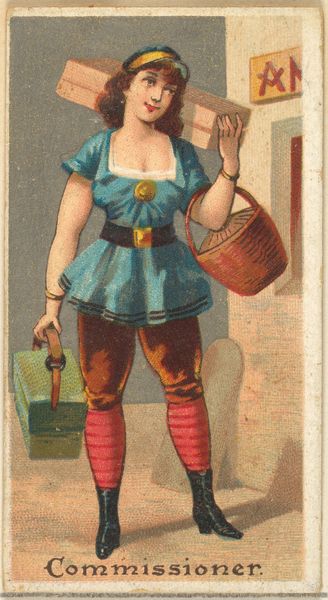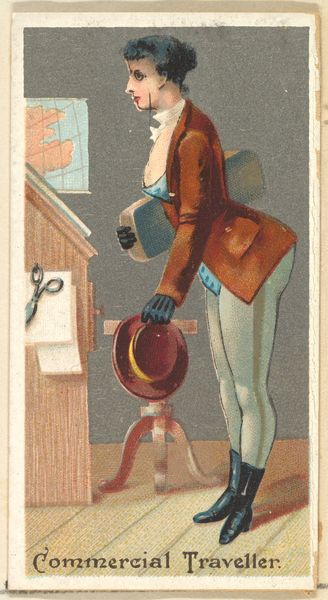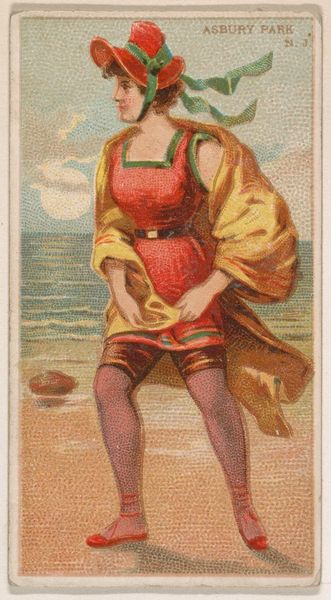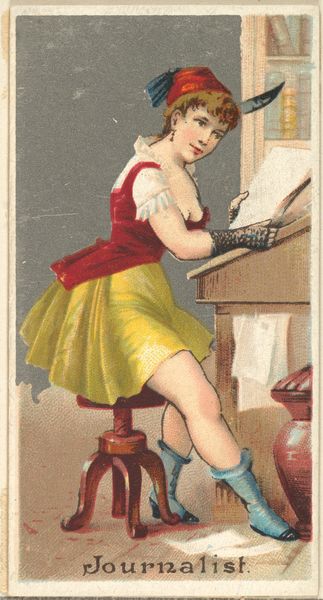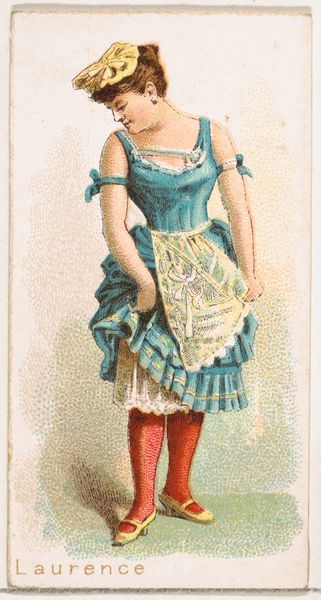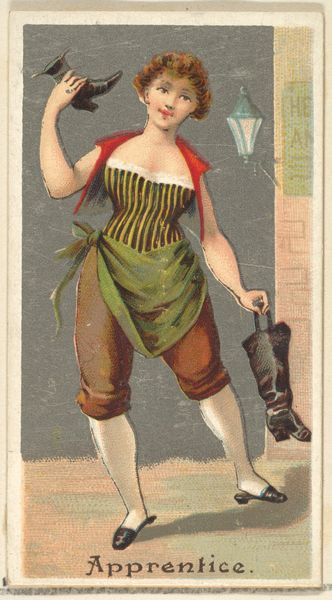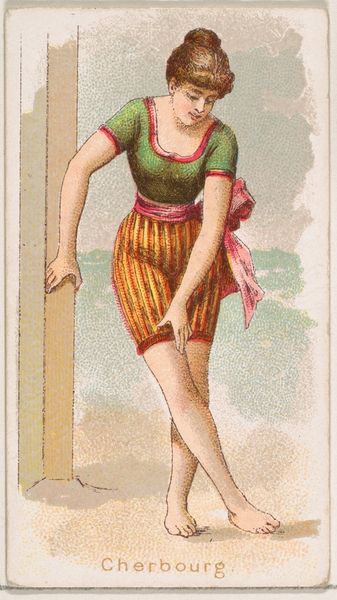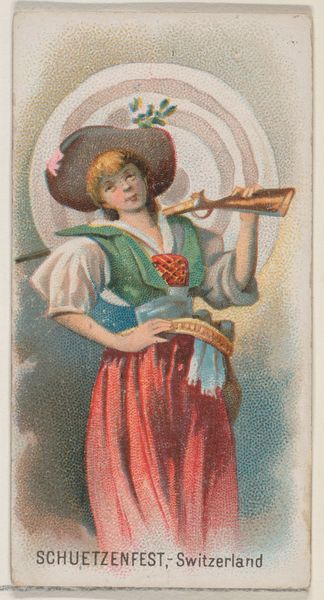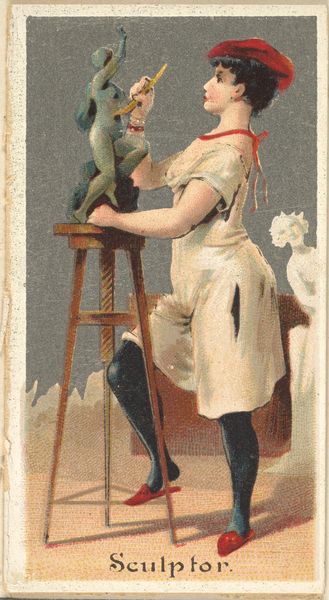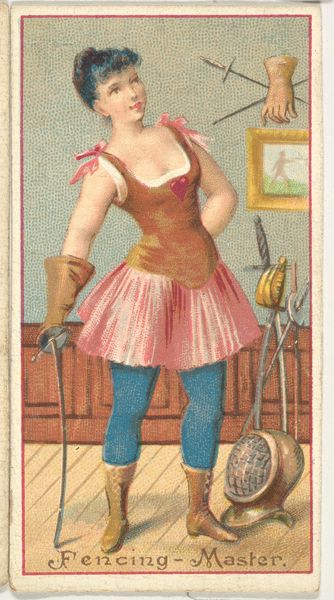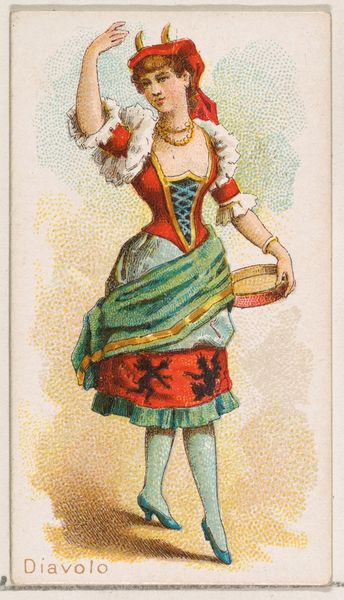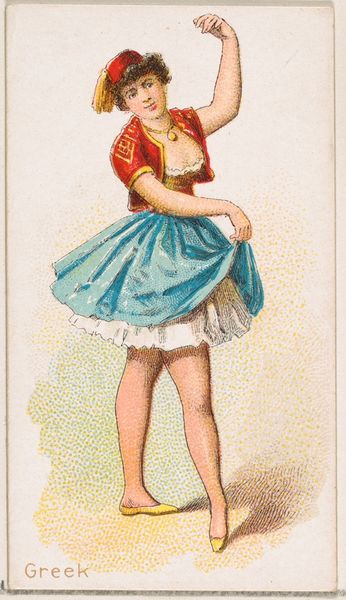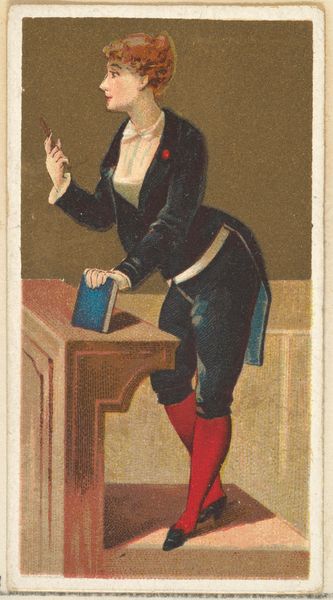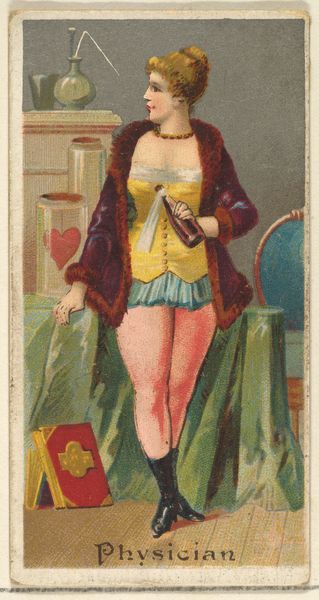
Apothecary, from the Occupations for Women series (N166) for Old Judge and Dogs Head Cigarettes 1887
0:00
0:00
drawing, coloured-pencil, print
#
portrait
#
drawing
#
coloured-pencil
# print
#
caricature
#
caricature
#
coloured pencil
#
genre-painting
#
portrait art
Dimensions: sheet: 2 11/16 x 1 1/2 in. (6.9 x 3.8 cm)
Copyright: Public Domain
Editor: This is “Apothecary, from the Occupations for Women series” made in 1887 by Goodwin & Company. It's a coloured-pencil print, surprisingly delicate. I find it… unsettling. The way she's posed feels almost mocking, like a parody of the profession. What do you see in this piece? Curator: The parody lies in the tension between aspiration and representation. Consider the symbolic weight of the apothecary figure: historically associated with knowledge, healing, even alchemic power. Then, look at her portrayal. Does she truly embody those qualities? The flamboyant clothing, the exaggerated features… it suggests a disconnect, perhaps reflecting anxieties around shifting social roles for women at the time. Do you see echoes of earlier allegorical depictions of feminine virtues here, being…repurposed? Editor: I think so! The objects surrounding her, the bottle and mortar, should speak to scientific rigor, but the composition undercuts it. They’re almost props. The "virtues," as you said, seem exaggerated, more for show. Is that what makes this caricature work? Curator: Precisely. By juxtaposing the symbolic language of science and medicine with a somewhat theatrical female figure, the artist creates a space for critical commentary. Think of the implications of commodifying female professions, like, even healing, through objects like these cigarette cards. It’s a double-edged sword; women enter new spaces, but are they taken seriously? Editor: I never considered that relationship to commodification. So it is about showing us a societal tension using symbols of aspiration contrasted with, almost, commercial reduction. Curator: Exactly! It’s a potent blend. We see encoded messages in these mass-produced images that spark cultural recognition even today. What do you think about that in terms of today's image economy? Editor: That is such a good question... This was more complex than it seemed, highlighting not just women’s roles, but their portrayal and marketing in the late 19th century. Curator: Agreed. Symbols have the power to transform perceptions over centuries; to unveil new narratives. This, if anything, should give all who study and use images pause to think deeply.
Comments
No comments
Be the first to comment and join the conversation on the ultimate creative platform.
